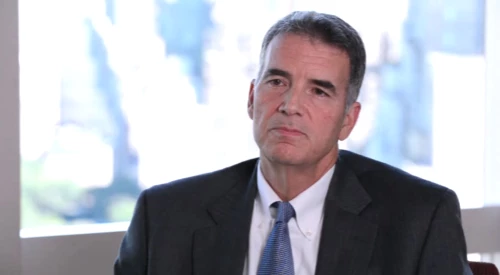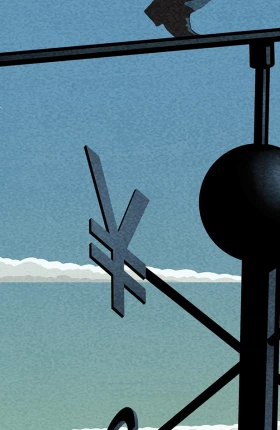Editor’s note: In March 2015, Bob Shearer retired as senior vice president and chief financial officer of VF Corporation.
When Bob Shearer became CFO of VF Corporation, in 1998, the company had a market capitalization of about $5 billion and was highly concentrated in two large but slow-growing businesses: jeanswear, which included the company’s heritage brands, Lee and Wrangler (two of the three iconic American jeans brands), and intimate apparel, comprising Vanity Fair (the origin of the company’s name) and many other smaller brands. Today, VF is the world’s largest apparel company, with a market cap of $22.8 billion and a stable of strong brands ranging from its heritage brands to more recently acquired lifestyle brands, such as Timberland.
In the process, the company has generated extraordinary returns to shareholders, making it a consistent top performer among its direct peers. In this interview with BCG senior partner Jeff Kotzen, Shearer describes the main drivers of VF’s transformation and the central role of the CFO in creating value for shareholders.
Bob, since you became CFO, you and the rest of the management team have transformed VF from a $5 billion company, in terms of market cap, to a nearly $23 billion company. What have been the drivers of your transformation?
It was a combination of three things. First, we changed our business strategy. We set out to change the mix of our portfolio so that we would have more lifestyle-driven brands versus more category-driven brands. Lifestyle-driven brands provided us with faster growth rates as well as stronger opportunities to improve our gross margins. So we’ve transformed the portfolio significantly. Second, we changed our financial strategy. In particular, we increased our dividend substantially. Third, we changed our investor communications. We realized that if we didn’t have clear communication around all of the other changes we were making, we weren’t going to create the additional value that was available to us. We put a strong focus on TSR, and that was probably one of the biggest game-changers for us. With our focus on TSR, we became a top-line grower as well as a bottom-line grower but, most importantly, a great provider of shareholder returns and shareholder value.
You mentioned that part of your TSR journey was learning about the importance of gross-margin percent. How has that affected your transformation and the important decisions that you’ve made?
One of the most surprising insights that came out of our work on total shareholder return was the significance of gross margin. It had the strongest correlation with a strong valuation in terms of driving a high price-to-earnings ratio (P/E). That influenced a number of the decisions we made. If you know the significance of gross margin, then that is going to change some of the trade-offs that you might want to make with top-line growth. Gross margin drives a lot of profit. But not only that, it also drives P/E and, therefore, shareholder value. So instead of looking primarily at top-line and bottom-line growth, which is pretty much where we were before we began this journey, we started to focus much more on gross margin. We trained our management group to understand the principles of TSR, what drives TSR, the idea that there are trade-offs in terms of driving gross margin versus driving top-line growth. We have those discussions consistently throughout the company. This new perspective has really had a significant impact on us, as have the other elements of TSR and a stronger P/E. It changes the way you run your business.
What are two or three concrete decisions and moves that you have made using gross-margin percent that you might not have made otherwise?
The first piece would be how you look at M&A and divestitures. In terms of our M&A program, we’re clearly looking for those businesses that not only give us sustainable top-line growth but also provide us with a strong gross margin. When you look at VF’s business, our outdoor and action sports business has become a much larger percentage of our total. One of the primary reasons for that is that these businesses provide us with stronger growth rates but also very strong gross margins. They’re the highest within the portfolio. So as we looked at the next opportunities for M&A, that had a significant impact on us.
The same is true for divestitures. As we exited our intimate-apparel business, for example, one of the key factors was that the gross margins in intimate apparel just weren’t as strong. It had a lot to do with the industry and it had a lot to do with history. We just didn’t see the opportunity for gross-margin expansion in our intimate-apparel business. So that’s why we exited the business.
Financial strategy is often an afterthought for many companies. At VF, it’s played an important role in your transformation. Can you tell us more about that role?
VF is similar to a lot of other companies in that we generate a lot of cash. That has always been a consistent part of our strategy. In the past, we would buy back some shares from time to time, and we also paid a healthy dividend. But when we took a really hard look at where we could provide the most shareholder value, in terms of leveraging the strength that we had from a financial standpoint, we decided to increase our dividend in a very significant way. The communications around the dividend increase—explaining why we were doing it—were also important. We made clear that we were financially strong enough to increase our dividend and still support our M&A program. In other words, it was a specific decision about how we invest our cash in order to provide the greatest returns. And we’ve been very pleased with its impact on our shareholder value.
I know that you gave very careful thought to investor strategy and how it fit into your overarching strategy as well as your transformation plan. Can you shed some light on how that fit in?
Our problem was that we were being viewed as a very safe stock but not as a stock that could provide long-term shareholder value to investors. That’s how we wanted to be viewed, but our messaging just wasn’t very clear. We wanted to have a much stronger appeal to the so-called GARP (growth at reasonable price) investor. But what we learned was that attracting such investors wasn’t going to happen automatically. It required developing a very specific strategy to appeal to the GARP investor. We need to learn the investment criteria of the GARP type of investor, what they were looking for, and then deliver it.
You are clearly a big believer in the importance of delivering strong and sustainable TSR. How have you been able to get the organization to come along with you, to help make it happen?
The first thing that we did was to explain that TSR is the number one factor in terms of what an investor is looking for. So it really is the report card for an investor. Once your management group and your people understand that, it makes the task of communicating the basic knowledge of TSR so much simpler. We educated our entire senior-management team—roughly the top 250 people in the company—about the principles of TSR and what drives it. That education process was extremely important. But what we also did was to start evaluating every financial plan that was submitted from our management groups in terms of TSR. You can imagine just how interesting that gets if one of the operating units sees that they’re not providing the kind of TSR that is required. It makes our groups think very, very differently about their business. We also really put some teeth into it by including the principles of TSR in our incentive compensation plans. The year before we included a cash generation component in our incentive compensation, we generated about $650 million of cash from operations. In the very first year afterward, that number jumped closer to a billion dollars!
You’ve been CFO of VF for 15 years now. And you’ve witnessed many changes in the CFO role. What do you see as the biggest opportunities and challenges facing CFOs today?
I see the role of CFO today being more of a COO type of role. There needs to be a much stronger business partnership. It’s no longer enough just to be a good accountant. The CFO really needs to be a great business partner with all the other folks on the management team.
Bob, thank you. That was a great discussion. We really appreciate your time.
Very enjoyable for me, thanks.





